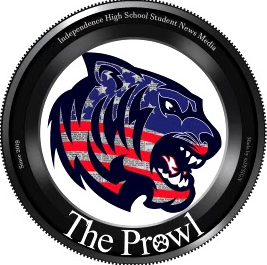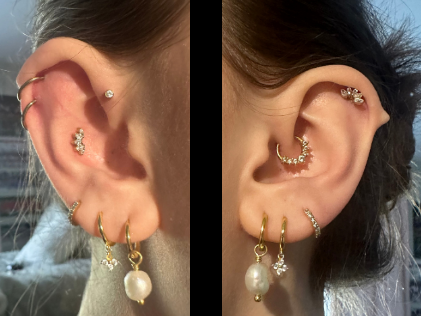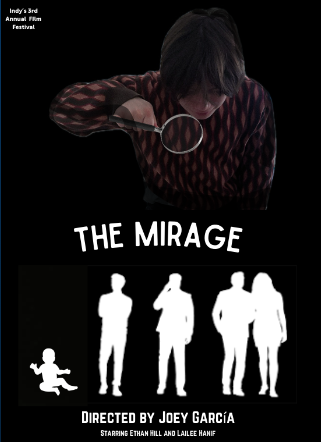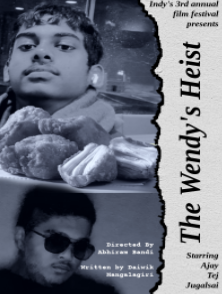Self expression is often influenced through trends we see on social media. One example of how people show their style is through ear and body jewelry. Piercings have had their presence in society for thousands of years and have shown many forms of creativity and artistic values such as cultural representation. Recentky, The Prowl caught up with Independence teacher, Ms. Lexi Swinimer, to talk about what it all means.
The eyebrow piercing
Face jewelry has given people septum rings, dermal jewelry, and the labret. The eyebrow, however, was generally found within the late 80’s and early 90’s grunge era.
Urban Body Jewelry states, “Its first appearance was in the 1970s as part of a punk subculture trend,” they comment that the re-appearance, as many trends do, of this occurred during the 90s-00s when many pop singers began to have them done as an accessory.
Now, eyebrow piercings are less common of an occurrence as many old pop culture idols have now since removed them and less teens are asking for them due to punk and grunge has now grown less popular in fashion.
Stretched lobes
This style of body modification was found to date back to before 3,000 BCE. The Aztecs were known for using more expensive plugs based on their status as a way to connect with their gods. Stretching your earlobe takes an extensive amount of time and, after a certain point, the modifications will be permanent.
Ms. Lexi Swinimer, fashion and design director at Independence High School, explained jewelry and its place in history. She said, “Initially jewelry was about royalty. Your space in society was based on what jewelry you were wearing.”
There wasn’t a significant time period where larger gauge jewelry was part of pop culture trends and was more related to culture and religion such as the Maasai people of Kenya. Today, stretching — also known as gauging — is more seen in other parts of the world outside the USA where this style relates to the culture.
The septum piercing
Jewelry in the septum — cartilage within the nose — has represented several different ideas throughout history and throughout different groups of people. The era for this piece was found a lot in the 80s where punk culture adopted it as a source of rebellion.
Egyptian, Indian, and African people have used this style as a symbol of spiritual growth and adulthood. Recently nose jewelry has become more popular and is seen more frequently now with several different meanings still aligned with spirituality and religion.
Navel piercings
Ear jewelry is the most popular form of body jewelry, however, body piercings have played a significant role in expression of self. However, in the 1990s, teen women watched as models walked the runway with a new statement piece: the navel piercing. The origin of the piercing dates back to ancient Egyptian and Indian societies where they often accessorized with chains around the body, looping through the navel.
Today, these accessories have become increasingly popular with younger people and teens. Teens have asked for navel jewelry more recently as another way of displaying a statement piece.
When asked what trends and eras are starting to be brought back, Lexi Swinimer, fashion and design teacher, states, “Mostly I think we’re seeing the 90s […] 90s was a lot of plastics and vinyl, especially in accessories and shoes, and that’s definitely coming back.”
Tongue piercings
Historically, tongue piercings were a way for cultures to honor the gods. Oral body modification has also been a part of grunge fashion and rebellion for many years in western society.
Major appearance in pop culture was around the 1980’s when punk style began to emerge. This was similar to lip piercings such as the Labret and the Monroe where teens wanted to have their own style and extreme look which piercings offered.
Shortly after, it was quickly realized that metal (and other materials) could decay tooth structure and mouth arrangement, therefore, leaving these in seemed to cause more harm than good. The National Library of Medicine comments in their article from 2020, “[…] 22% had tooth fracture(s) due to piercing. From this study, it emerged that oral piercings can represent a risk to oral health and that there is a widespread lack of awareness of the complications and correct methods of maintaining oral piercings.”
Where does this fit into history?
This is one of many examples of trends and repetition within human culture. Pulling things from the past that represented connection with gods and self and bringing it into today’s style. Ms. Swinimer concludes with, “[trends] are about defining your style and who you are and that’s something that’s changed a lot over time.” Even jewelry and piercings that aren’t as common now as they were in the 1980’s and 90’s, still play a factor of what is “in” now. Vogue and events such as The Oscars give the opportunity to bring statements back into current pop culture.






